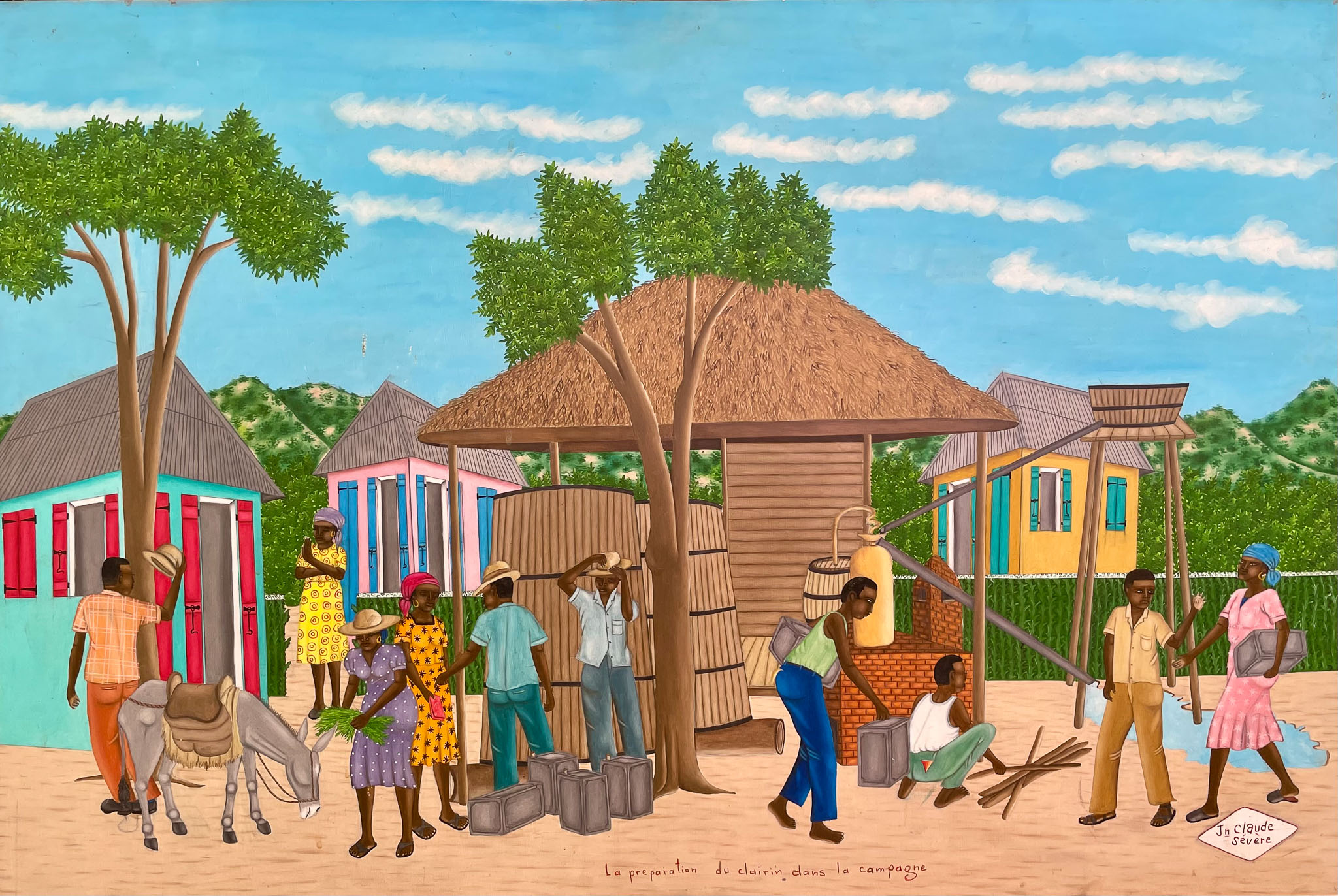Postcard From Haiti: May 2024 by Rick Forgham
Viewing “La Preparation du Clairin dans la Campagne” by Cap Haitian artist Jn. Claude Severe is almost like visiting an actual Clairin distillery. The only thing missing is the sweet and pungent aroma of the freshly pressed sugarcane juice going through the fermentation process.
Clairin…or Kleren as it is known in Haitian Kreyol…is a less refined and un-aged version of Rhum Agricole which is the distinction given to rums of the French-speaking Caribbean islands all of which produce their rums from sugarcane juice rather than molasses. Although no official count exists it is estimated that there are approximately five hundred or so small artisanal distilleries in Haiti that produce Clairin. Each of these distilleries, also known in Kreyol as a Guildive, produces a Clairin that is distinctive to their terroir, the variety of cane that is grown and pressed, and the freely existing yeasts that initiate the fermentation of the golden-colored freshly rendered sugarcane juice.
As an artist Severe accurately painted a typical Guildive by including key elements like the fermentation vats which are typically made from local wood such as Caribbean Oak. The tower with its water tank provides cooling water that is essential to the distilling process. And of course, the copper was still sitting atop a brick firebox. Severe painted a distillery worker loading the firebox with sticks of wood which probably was the practice back when wood was plentiful. Now however the Guildives burn the dried cane pressings called bagasse to fire their stills. The bagasse burns with intense heat and serves as a “free” fuel for the distillery. Also worth mentioning is the fact that the Guildive customers are filling repurposed twenty-liter Lard Tins with the Clairin. In Haiti, everything gets used and reused while very little goes to waste!
The production of Clairin is in many ways an important contributor to the economic health of the community where the Guildive is located. All told a Clairin distillery may employ fifty to one hundred individuals to Plant, cut, and clean the harvested sugarcane, Workers who deliver the cut sugarcane to the Guildive by oxcart or mule-back…And of course, the men and women who labor in the actual Guildive itself…Pressing the sugarcane, controlling fermentation which takes between three to five days, transferring the juices from vat to still, firing and operating the pot-still, and finally storing the finished Clairin.
Given all that is involved in the growing and production process, it may come as a bit of a surprise that a liter of Clairin can sell today for less than USD 1.50 or in other terms about one-eighth of the price of a bottle of Haiti’s widely known and globally popular Rhum Barbancourt. With the scale of its production and relative affordability, the consumption of Clairin is firmly engrained into the social fabric of Haiti, from its use in Voodoo ceremonies to weddings, Mardi-gras, Ra-Ra, and of course, at the Sunday afternoon cockfight, Clairin is an integral part of any event. Spiced for consumption with red-hot peppers or perhaps cloves, lemongrass, or any number of herbal infusions, Clairin can be as expressive and unique as the Kreyol language itself.
So if you are lucky enough to find a bottle of Clairin imported from Haiti at a liquor store near where you live…Purchase a bottle and
with one small sip, you may fall in love with Haiti all over again!
Rick Forgham May 2024
